Flat Jane Austen in Providence, Rhode Island:A Visit to the Circulating Library (and a peek into the future)
Editor's Note: All photos taken at the Providence Athenaeum (1836, close enough to Jane's time) one of the oldest subscription libraries in the country. All are welcome to stop in for a tour and browse. Jane had to view the brand new bust of Mary Wollstonecraft! While she was there, she got a peek into the future, in the later 19th-century and 20th-century as novels became more popular and literary criticism of HER novels became a thing.
All are welcome to come take a tour and browse.
June 18--
My dear friends,
At last! A visit to the circulating library! There are many volumes to browse, artwork to peruse and people to meet.
I am a bit surprised to learn that the former colonists have received a classical education. The building resembles a Greek temple such as the ones that have recently been discovered. There are even statues and busts of classical poets, gods and goddesses! Of course they also have busts and sculptures of Benjamin Franklin.
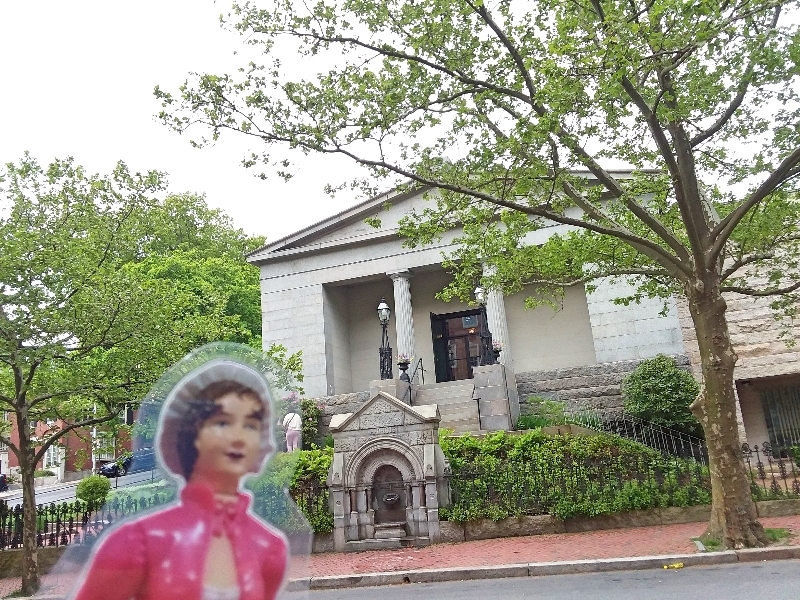 |
| Providence Athenaeum 1836 |
 | |
recently refurbished and still drinkable! “Come Hither Every One That
Thirsteth.” A longtime LEGEND claims that all those who
drink from it are bound to always return to Providence |
 |
| A view of the circulation desk, virtually unchanged in over a century |
Behind the desk, above Jane's head, is a beautiful painting known as The Hours painted by Edward Greene Malbone, a Royal Academy artist in London. It depicts three female figures represent the Greek horae, goddesses that personify the orderly passage of time.
Minerva or Athena, perhaps? Athena Lemnia. Lord Elgin must have rescued this one from the Parthenon. She's missing an arm! That dreadful man! No appreciation for art.
 |
| Plaster statue of Athena Lemnia 1913. Read the story at the Ath website. |
Is this who I think it must be? Mary Wollstonecraft? I am uncertain why there is a bust of her but I approve.
 |
| New in 2020, a plaster bust of Mary Wollstonecraft! The editor- and Jane- were quite exited to see her on display at last. |
There are busts of good English writers as well: Shakespeare, Milton, Lord Byron (good writer, deplorable conduct). Even the Scottish poet Robert Burns is represented. Another one wanting conduct.
 |
| L-R : John Keats, Mary Wollstonecraft, John Milton |
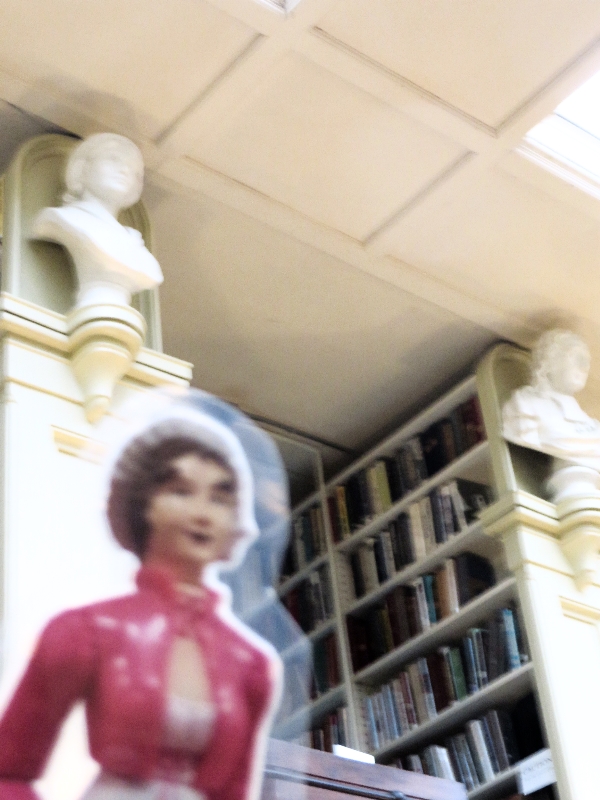 |
| Another view of Mary and John Milton |
Another Englishman turned traitor, their American hero, Mr. George Washington. Pity he was such an English country gentleman. I think he too will one day be forgiven for turning against King and country.
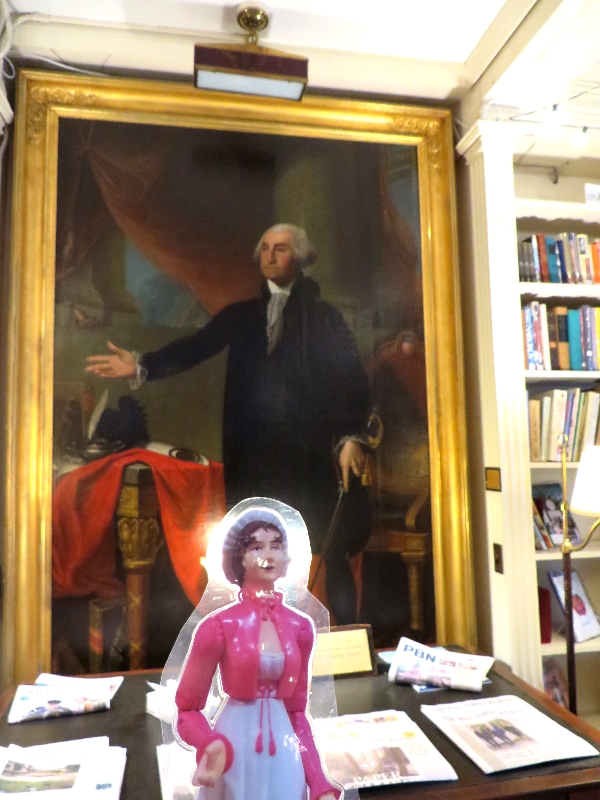 |
| George Washington, ca. 1830s, anonymous, after Gilbert Stuart (1755-1828) |
An extra large portrait of the late President hangs in the reading room [downstairs].
This portrait is a copy
of one of the most well-known 18th-century American
paintings. The painting was painted by American artist Gilbert Stuart for William Petty, first Marquis of
Lansdowne, who helped shape the 1783 peace with America following the war for American independence. This copy of the Lansdowne portrait that hangs in the
Athenaeum was painted by an unnamed "accomplished
Italian artist." It was donated by merchant Samuel
Larned (1788–1846), the Chargé
d'Affaires to Chile and Peru, on the
occasion of the opening of the Benefit Street building. The placement in the public halls of the library
is to encourage the virtuous and patriotic character of
Providence’s youth.
Belowstairs is the headquarters of the Franklin Society, a scientific and philosophic club (1838-1848).
They say the Franklin Society reading room has been built into a hill and the building is being held up by the shelves. One day it may just sink!
Look at this curiosity! What could it be?
They tell me this cabinet was built to house the Description de L'Égypte published between 1809-1828 by Napoleon’s Imperial Press ( Napoleon again!) It was designed by Ameican book collector John Russell Bartlett and English architect Frederick Catherwood in the manner of an Egyptian temple with exterior decoration based on plates in the Description. I see the plates behind the cabinet. Napoleon ordered this book published in 1802 to share the discovered of the french expedition to Egypt. This particular copy belonged to French statesman and ultra-royalist Jules Armand, Prince de Polignac. Read more in the Athenaeum's self-guided tour brochure.
Please turn the page...


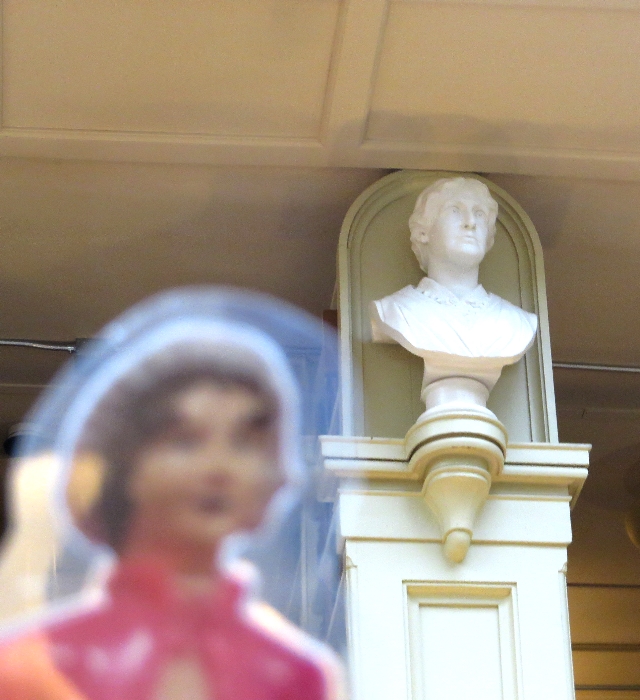
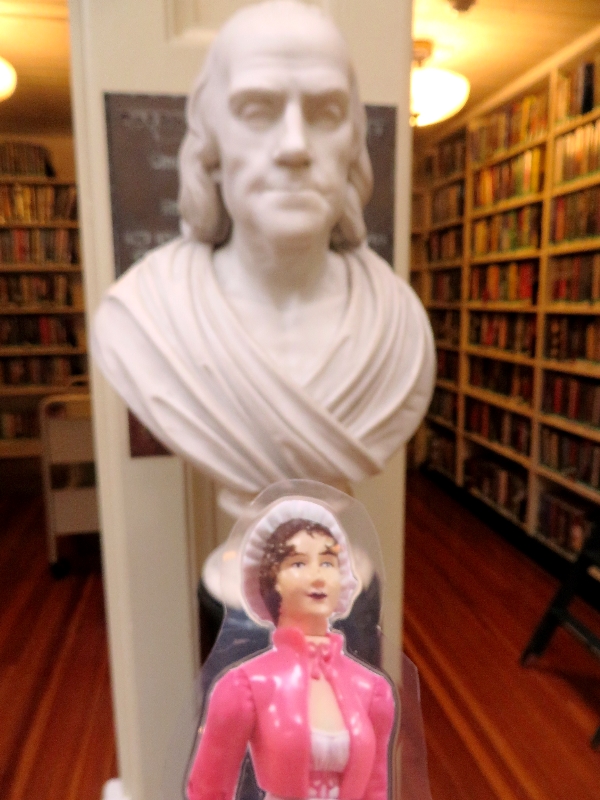

No comments:
Post a Comment